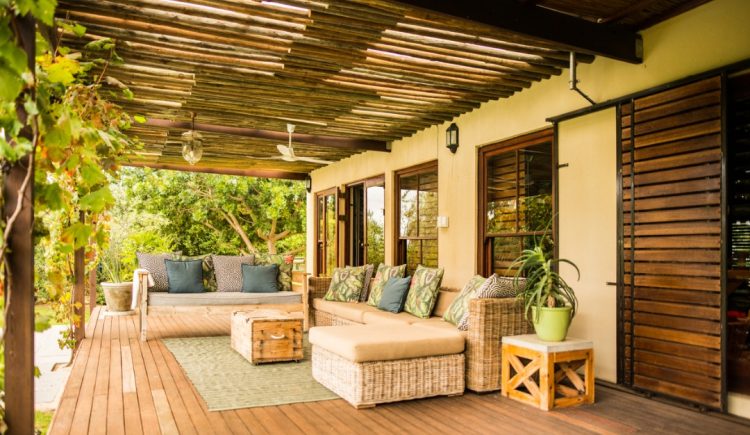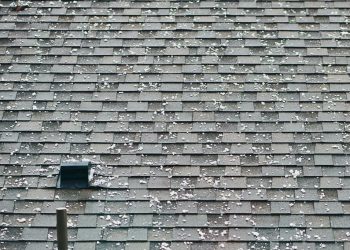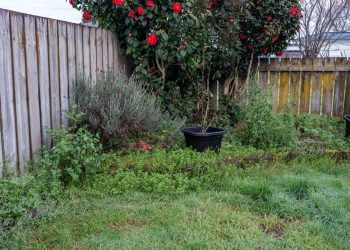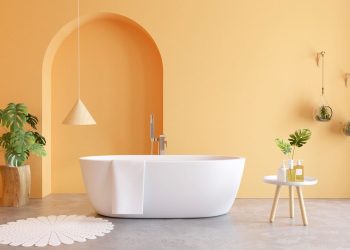As we begin to put the hottest days of summer behind us and head into the more temperate days of the approaching autumn, now is the perfect time to take full advantage of your home’s outdoor space, whether it’s for an intimate al fresco dinner or an end-of-summer bash. With a few targeted enhancements, you can ensure that your outdoor area has all the inviting qualities and important functionalities that you enjoy indoors. Follow these steps from home expert Wendy Lau via Better Homes & Gardens.
1. Choose a purpose. All homeowners want something different for their outdoor space. Some see it as a party hot spot, while others are aiming to create a quiet retreat in a natural environment. Start by figuring out what matters to you most so that you can then craft your space accordingly. For example, if a comfy lounge area is what you envision, invest in cushy outdoor furniture and cozy accents like throw blankets and pillows for crisp autumn evenings.
2. Connect to your interior space. Make your outdoor space a true extension of your home by bringing some of your indoor elements outdoors. As Lau explains, this will create a visual connection between your home’s interior and exterior space. She suggests using the same pattern on your patio umbrella and your living room curtains, for example, or matching the metal of your outdoor dining table to the metal finishes in your kitchen. This way, you and your guests will feel like you’re moving to another area of your home as opposed to a completely different place.
3. Plan for weather. Naturally, the effects of weather will take their toll on outdoor furniture and accessories, but that doesn’t mean you’ll have to reinvest and replace these costly items each year. Instead, make weathering part of your strategy. If you don’t have a place to protect furniture from the elements, make selections that you will still be happy with as their finish or patina weathers naturally. For instance, if you don’t like the look of aged copper, don’t make it part of your outdoor space.
4. Prioritize lighting. When it comes to the perfect outdoor space, lighting shouldn’t be an afterthought, but rather, a central part of your design scheme. Lau advises approaching lighting in the same way we test out paint colors: Pick up some inexpensive string lights or battery operated lanterns and experiment by placing them in different parts of your outdoor area. This will allow you to figure out which intensity of lighting should go where.
The best way to put all of the above ideas into action is to start with a “mood board” where you can collect ideas and photographs of how you’d like your outdoor space to look. This will help you carefully invest in your space over time to achieve the ultimate outcome: an inviting extension of your home in which to gather and relax.











